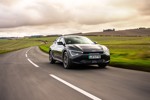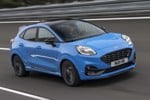Suzuki GB director of automobile believes that a hybrid vehicle supply model might make the most sense for the UK’s car retail sector when the current manufacturing crisis eventually subsides.
As the automotive retail sector begins to ponder the future of vehicle supply and distribution – with most considering the pros and cons of a ‘push’ or ‘pull’ model – Wyatt writes that a common-sense compromise could be found “somewhere in the middle”.
I am reading a lot of push and pull commentary that suggests that as supply returns car manufacturers have a choice to make.
It is positioned as a Good v Bad thing encouraging our industry not to return to the so called bad ways and urging manufacturers to not revert to the perceived negative practices of the past.
This is not a simple matter of choice.
Push v pull
The supply chain determines when product will be manufactured, delivered for distribution and when products are made available for sale.
Under a pull supply strategy actual customer demand drives the process.
While push strategies are driven by long-term projections of customer demand.
We are in uncertain times and manufacturers have to make very long term commitments to the whole supply chain from component supplier through to assembly and distribution.
All of these elements have to be planned around projected (Push) or actual (Pull) demand levels
A push-model supply chain is one where projected demand determines what volume of stock enters the market. For example in the UK we have a peak in demand in March and September. Companies have predictability in their supply chains since they know what will come and when long before it actually arrives. This also allows them to plan production to meet their needs and gives them time to prepare a business plan and marketing strategy.
A pull model strategy is related to the just-in-time school of inventory management. The objective is to minimise stock on hand, focusing on build to order or real time demand. Products enter the supply chain when customer demand justifies it. Companies avoid the cost of carrying inventory that may not sell and as a result the operating margins are higher.
The risk is that they might not have enough inventory to meet demand if they cannot ramp up production quickly enough customers may have to wait a long time for their products and some may decide not to wait and choose to purchase elsewhere
A hybrid model
The reality is that every supply chain strategy is a hybrid somewhere between push and pull.
A fully-push based system stops at the dealer where it has to wait for a customer to "pull" a product from the dealer.
A fully pull based system sees customer demand being matched seamlessly to available production slots.
However the reality is that we need a strategy that is designed to be a hybrid (flips between push and pull) somewhere in the middle of the process.
For instance, a manufacturer may choose to stockpile finished product at its distribution centres to wait for orders that pull themselves through its dealer network.
Every manufacturer would love an environment where every car was made to order and demand and supply are in sync with each other but this is rarely the case.
Ultimately it is not the model but the tactics and behaviours that we deploy that will determine our success.















Login to comment
Comments
No comments have been made yet.